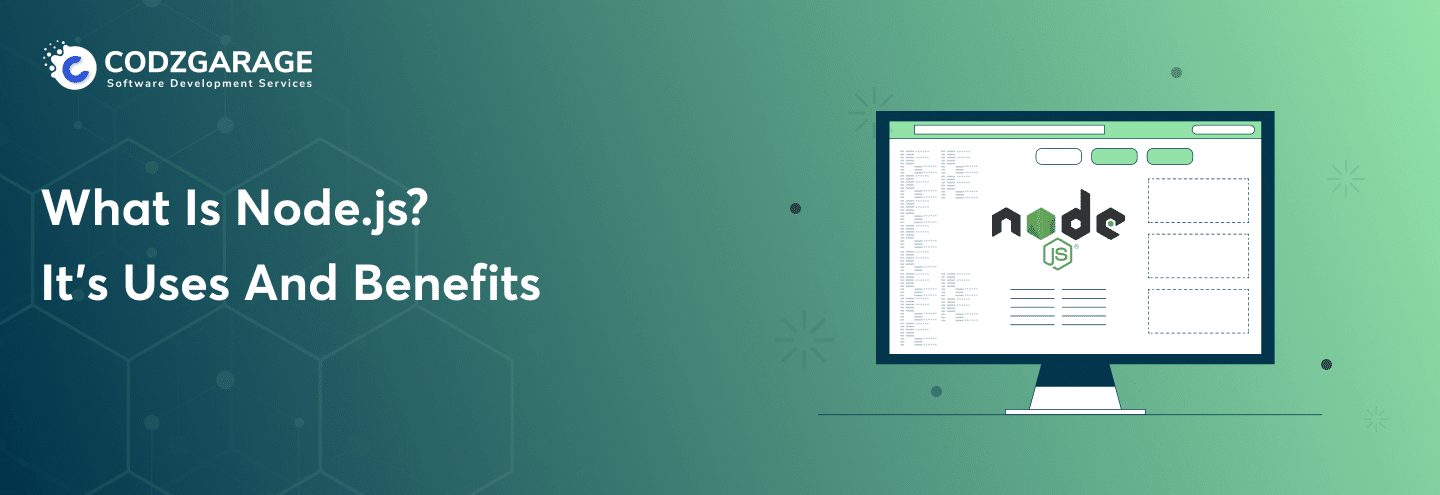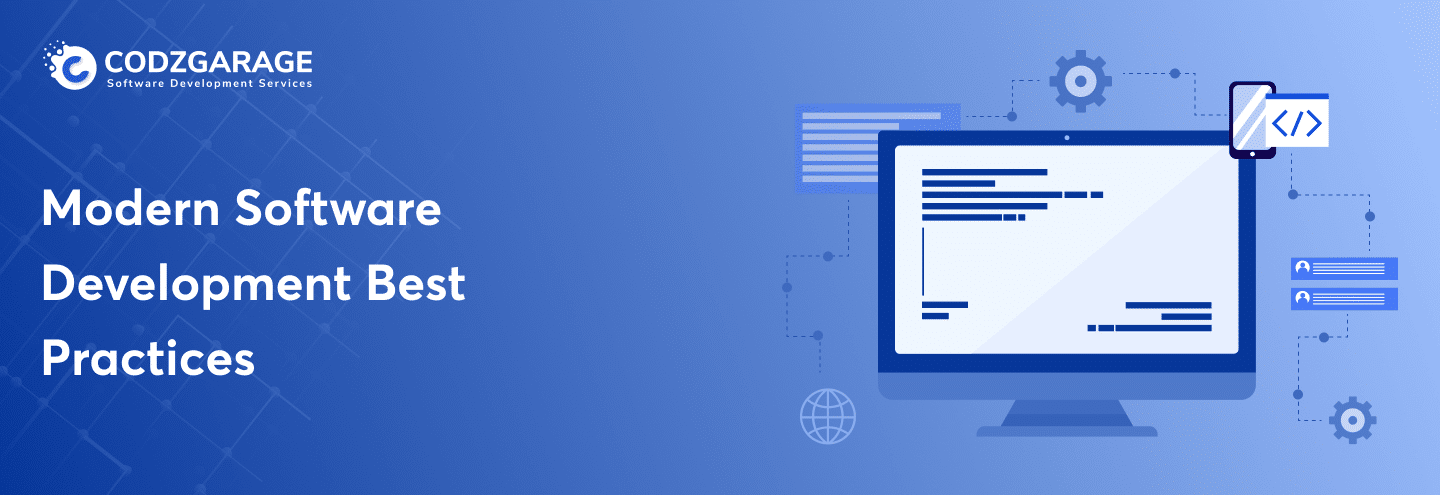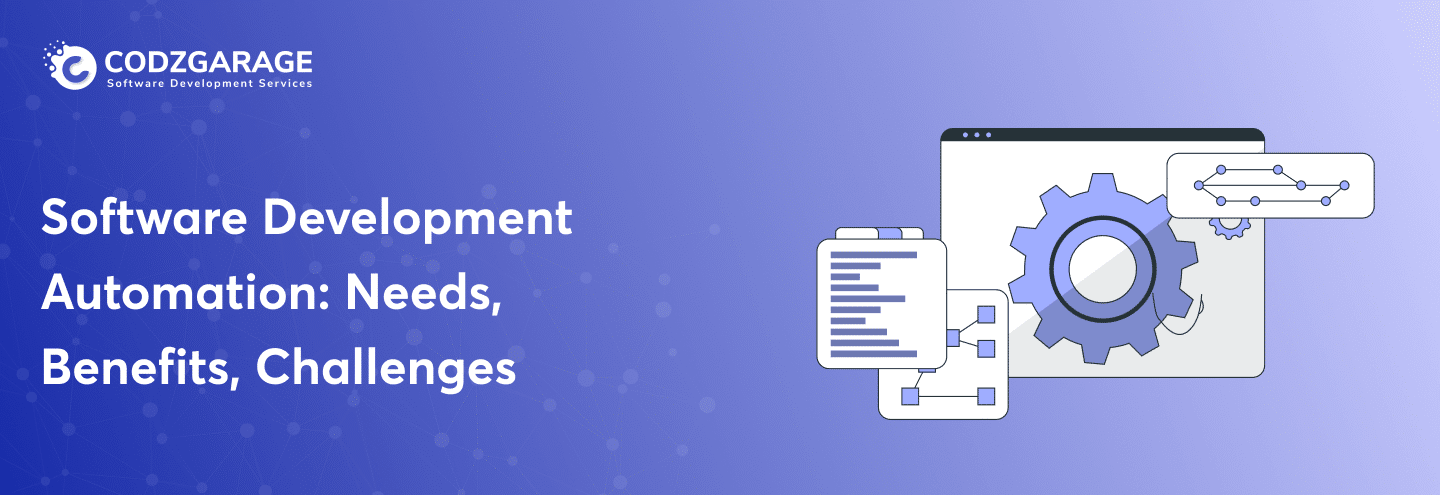-
1235
Proof of Concept (PoC) In Software Development: An Intensive Analysis
Flip through this guide describing the term “Proof of Concept (PoC)”, its uses, along with the steps to create it!
A (P0C) Proof of Concept glimpses whether or not your yet-to-be-created software solution will serve your purposes. In order to create an efficacious PoC, you need to be aware of software development trends, trending tech stacks, user needs, and so on. Fortunately, this article explores the concept of the PoC, which includes what PoC is, why you need it, its benefits, and the essentials to create the Proof of Concept.
When businesses are to build software, they want their software to be created as soon as possible. They just want their ideas to be brought to life without any delay. But, you may get flabbergasted to know that it could lead to consequences down the line.
When you’re in a hurry for software development, you’re more likely to have less market research, improper planning to satisfy the users, lack of resources, and the like. You may be surprised to know that around 90% of start-ups are doomed to failures caused by this very issue.
Codzgarage is a one-of-the-class IT firm offering a complete range of software product development serviceseasing the hassles encountered by organizations across the globe.Contact usto discuss your project!
You’re thinking, what if we could have a solution to this issue, aren’t you? Be happy, as the solution to this problem exists! Yes, with the PoC in software development, you can do it. This article will drive you through a complete assessment of PoC Proof of Concept in software development.
Let’s dig deeper!
What Is PoC (Proof of Concept) In Software Development?
A proof of concept (PoC), also known as Proof of principle, is a strategy aimed at anticipating a software development project before it’s developed. It assists businesses to determine the way to build new software systems and anticipate their scintillating future. The very approach glimpses your product’s future, whether the idea of the product is going to be turned into reality or not.
A POC isn’t targeted to seek validation for the market demand and the best way to build it, but it is aimed at creating the idea and testing whether that very idea is feasible for being executed or not. Furthermore, it allows all the members working on the proof-of-concept to assess the possibilities of its financial potential.
Why Do You Need Proof of Concept (PoC)?
If you get a less optimistic result out of developing a PoC, it simply shows that your concept of the project is impractical. The result may appear as a piece of terrifying news in the first place; however, you should remember that a coin has two sides. Isn’t it beneficial if you have the convenience of early detection of a flawed software concept? If you can detect a flawed concept, you’ll be able to save resources, efforts, and costs that can be invested in another project with a higher percentage of success. Here’s more about why you need a proof of concept (PoC) for your project!
- Core Idea Validation— There are a multitude of reasons why you should create an effective PoC; however, one of them is the validation of the core idea. At times, your product idea may be based on false assumptions. By creating Proof of concept, you can analyze the market demand and concept validation of the project to be built.
- Appropriate Investment— Stakeholders tend to be eager to invest when they have a new idea. It’s natural—as they see the potential to succeed in the project. With the PoC, you’ll be able to confirm that the idea, technology, software development model & methodology, as well as the team you’ve chosen, will turn your idea into reality, fulfilling your business requirements.
- Abridged Business Strategy— Proof of Concept (PoC) lets you outline the project’s significant priorities. With this, you can simply create a roadmap and determine a timeframe, thereby forecasting the cost of custom software development with ease and convenience by utilizing the very information you’ve accumulated from PoC.
Significant Aspects Covered In A Proof of Concept
- Comprehensive Explanation— The Proof of concept should be expected to explain the key concept of a SaaS product development, which includes its features, functionalities, development cost, deadline, maintenance needs, and the like. Besides, it should also identify the human resources required for bringing the idea to life.
- Awareness of Target Market— Next up, a PoC should define a product’s target market while assessing the market’s competition, conditions, and potential requirements.
- Pinpointing The Need of The Audience— A proof of Concept should ascertain if the product to be built has a target audience whom SaaS organizations are willing to engage with for marketing their products. Besides, they should also determine if there’s a crucial pain point to justify paid usage. I tend to meticulously point out the needs of users.
- Covering Current & Previous Financials— In a company that is already being operated, a POC should involve present as well as previous financials to cover development, staffing, sales & marketing, and various other expenses. In the case of a first-time project, there’s a need for POC, but it can’t produce financials.
- Outlining Overall Strategy— A proof of concept should outline marketing strategies on how to connect to the potential users. Furthermore, it should also suggest the essential tools and technologies to be utilized for planning promotional activities as well as budget allocations.
What Are The Advantages of Proof of Concept In Software Development?
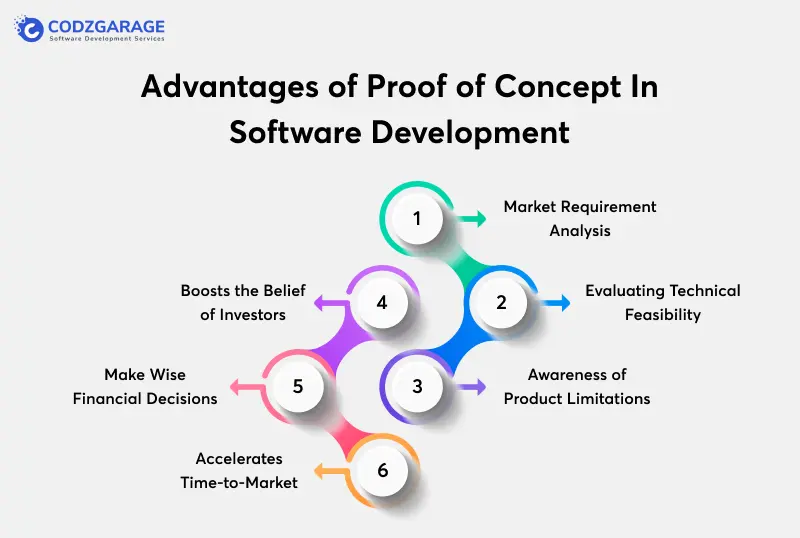
There are gazillions of businesses out there that have state-of-the-art business ideas, but even then, they fail. You might be pondering over the cause, mightn’t you? The CBInsights states that the root causes for the same are various. It could be the lack of funds, disability to raise ample funds, lack of market demand, and the like. Fortunately, there’s a solution to these issues. With the help of the Proof of concept in software development, you can address all these obstacles to embrace a better outcome. Look at the pointers mentioned below to know the advantages of the PoC:
- Market Requirement Analysis— The PoC specifies and outlines the issues and challenges to be addressed by the product to be developed. The aim of the initiative is to make sure the system gets built by being grounded in reality, resulting in offering users what they need.
- Evaluating Technical Feasibility— Knowing the technical possibility of a proposed software is another advantage. With the help of the Proof of concept, you’ll be able to determine the technical feasibility of a certain software proposal.
- Awareness of Product Limitations— The PoC lets owners, as well as software development companies, know the limits of their product ideas, benefits, and drawbacks. With this, the owners can understand and choose suitable software development trends and strategies.
- Boosts Belief of Investors— To persuade investors isn’t a tiny task. You need more than just enthusiasm to cause them to nod to invest in your project. The Proof of concept demonstrates why and how the very product idea is worthwhile and why they should invest in the very project.
- Make Wise Financial Decisions— Improving funding is one of the crucial efforts associated with the launch of a new product. With PoC, you can know the needs of the budget, thereby arranging and setting them aside for any need down the line.
- Accelerates Time-to-Market— When you create a proof of concept, you tend to establish a course of action. By doing so, you can make essential changes to the software if needed.
6 Ways to Create An Efficient (Proof of Concept) PoC?
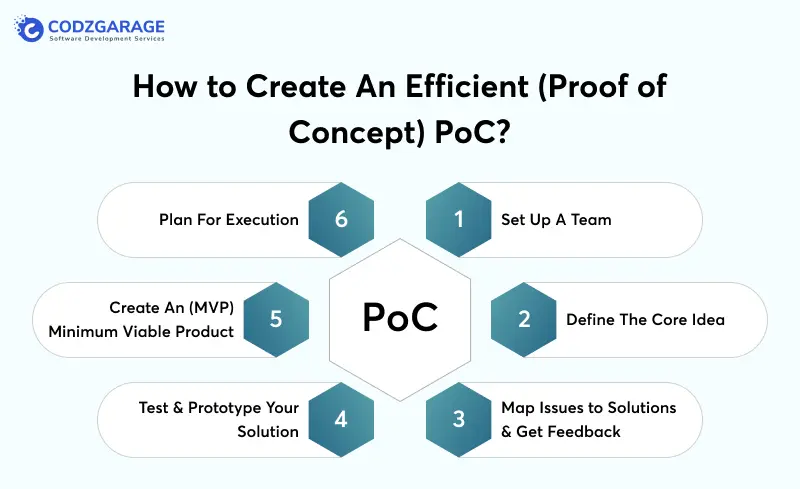
To put it in a nutshell, creating a proof of concept isn’t rocket science but involves very convenient guidelines. However, the creation of PoC isn’t a tedious task to perform; you need to cover the specific and crucial points. Moreover, a proof of concept is a dynamic document that is likely to be modified down the line when you get new ideas. Following are the steps that you can employ in order to create a groundbreaking proof of concept for your software development idea:
Set Up A Team
First off, you need to set up a team of vetted engineers with a knack for building innovative software systems. So, consider setting up a team of adroit developers to work on PoC drafting. The team should be filled with accomplished engineers, which include the product team members, decision-makers, writers, and stakeholders.
Define The Core Idea
Next up, defining the core idea comes into play. No matter how huge the amount you spend on software development, it only makes sense if your target users leverage its benefits. Hence, before you move to the development phase, you must be clear about the issues your target audience comes across with.
For that to be possible, you only need to talk to a certain number of people to hear the same repeated obstacles time and time again. Make sure you inquire about the consequences of the stumbling blocks while you talk to the stakeholders and individuals. After analyzing the answers, you’ll be able to define a core idea about the PoC creation.
Map Issues to Solutions & Get Feedback
In this phase, you create creative solutions for each obstacle you discovered in the previous step. You may have various approaches to each issue, but you need to choose one that suits you the most. You should brainstorm each solution to the problem—as you find many. After that, compare them with each other in terms of competition, cost, technological difficulties, timeframe, and the like.
Once you have assessed all the solutions to the problems, consider revisiting the stakeholders and ask for their advice on the same. Once approved, this documentation will give you a crucial perspective. Besides, prepare a list of essentials you need to work on the project. It may include resources, development team, timeframe, KPIs, and the like. Once you’ve done this all, you’ll be ready to move to the next step.
Test & Prototype Your Solution
preliminary product to get tested with the people you interviewed previously. Once you’ve finished creating the prototype, show it and get it tested by the interviewees to obtain additional input. Don’t miss out on taking notes of the answers—as they’ll assist you in determining whether you’ve missed any guidelines and crucial features.
Create An (MVP) Minimum Viable Product
Now, the creation of the Minimal Viable Product (MVP) comes into play. You may know that developing an MVP is different from the prototype, and you can utilize it in the real world. The MVP contains only those features essential to address the key drawbacks you mentioned. However, it consists of limited features; users tend to get appropriate benefits from the same.
With an MVP, you can test the product with a large group of people in a more representative way. It enhances the chances for more feedback, assisting you to determine if the product is appealing and attractive to stakeholders and users.
Plan For Execution
Now that you’ve done all the essential steps, planning for execution should be the need of the hour. Plan the project outlining the data you’ve collected in the previous steps. This plan should outline the step-by-step procedures that need to be followed. You should consider this roadmap as a blueprint for software development. As you employ this blueprint, you’ll remain on track throughout the software development while clearly understanding the eventual goals.
Wrapping Up!
That’s all there is to it! This article discussed everything relating to the Proof of concept in software development. This discussion includes answers to questions like “What’s PoC, What’s the need of it, and what are its advantages along with the steps required for Proof of concept creation on software development. Hopefully, you’ve got all the possible answers to your questions regarding this topic, so make use of this information for your business success!
Need
consultation?Developer’s expertise
- 11+ years of experience
- 150+ projects
- Timely delivery






 Kevin Bhut
Kevin Bhut 